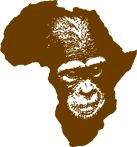Africa Programmes
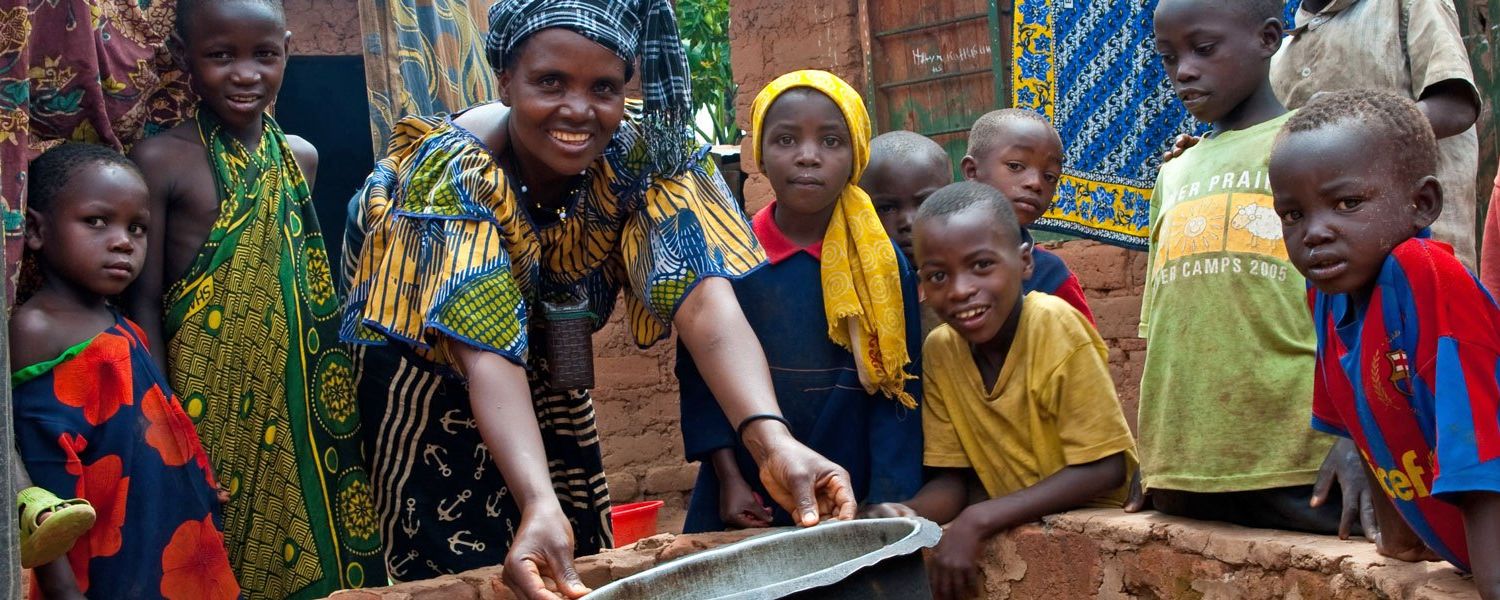
Our multifaceted sustainable development and biodiversity protection efforts include improving human livelihoods, protecting great apes and their habitats, and encouraging youth to care for the world— All work towards Dr. Goodall’s vision of people, animals, and the environment existing in harmony.
Improving Gender & Health Outcomes
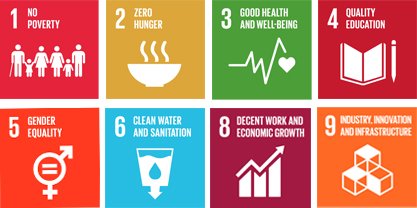
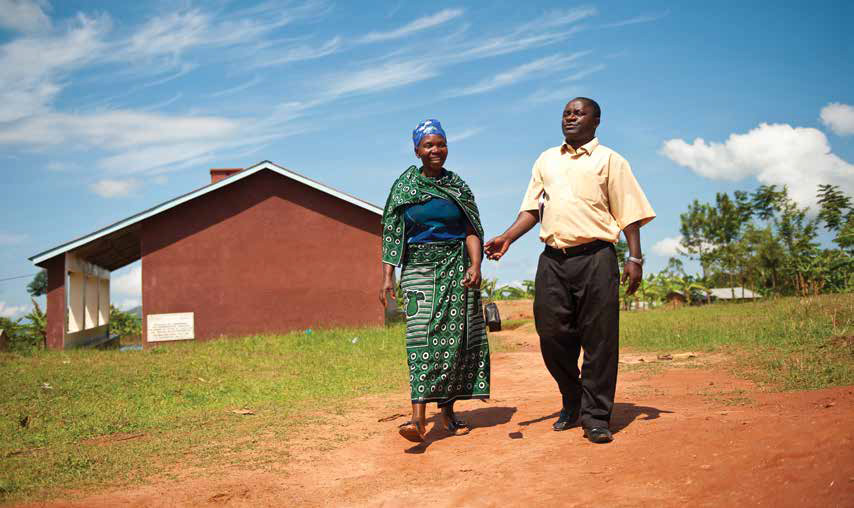
Through community-centered health projects, improvements to water supplies and programs designed to keep girls in school.
Increasing access to education for women and girls improves their socio-economic prospects and reduces pressure on natural resources. Our programs help girls stay in school past puberty by providing them with hygienic latrines that offer privacy, sanitary supplies, a peer support network and access to information about their health. We encourage women to increase family incomes by helping them develop sustainable sources of income through projects like tree nurseries, animal husbandry and permaculture. Each of these activities helps reduce habitat loss and promotes the overall well-being of the community and the forests that surround it.
Additionally, JGI’s community-centered health projects diminish disease transmission among species, and help improve overall community health. Our health-related projects include protecting watersheds, establishing centrally located sources for potable water, increasing access to immunizations, installing safer and more efficient wood-burning stoves and providing access to solar lamps.
JGI’s community-centered conservation approach works to involve human stakeholders in the management of their natural resources and conservation of local wildlife. We at JGI care about these people not only as conservation partners but as individuals with personal and societal needs. Since we strive to bring people, animals and the environment together to live in harmony, we understand that healthy communities and healthy landscapes go hand in hand.
By aiding communities in improving their health care, education, gender equality and economic opportunities, we help to improve their well-being while increasing their willingness and opportunities to focus outside of their personal, immediate needs and on the community’s need for future sustainability. Promoting sustainable practices and projects teaches people that protecting their environment promotes their own well-being and the sustainability of their community.
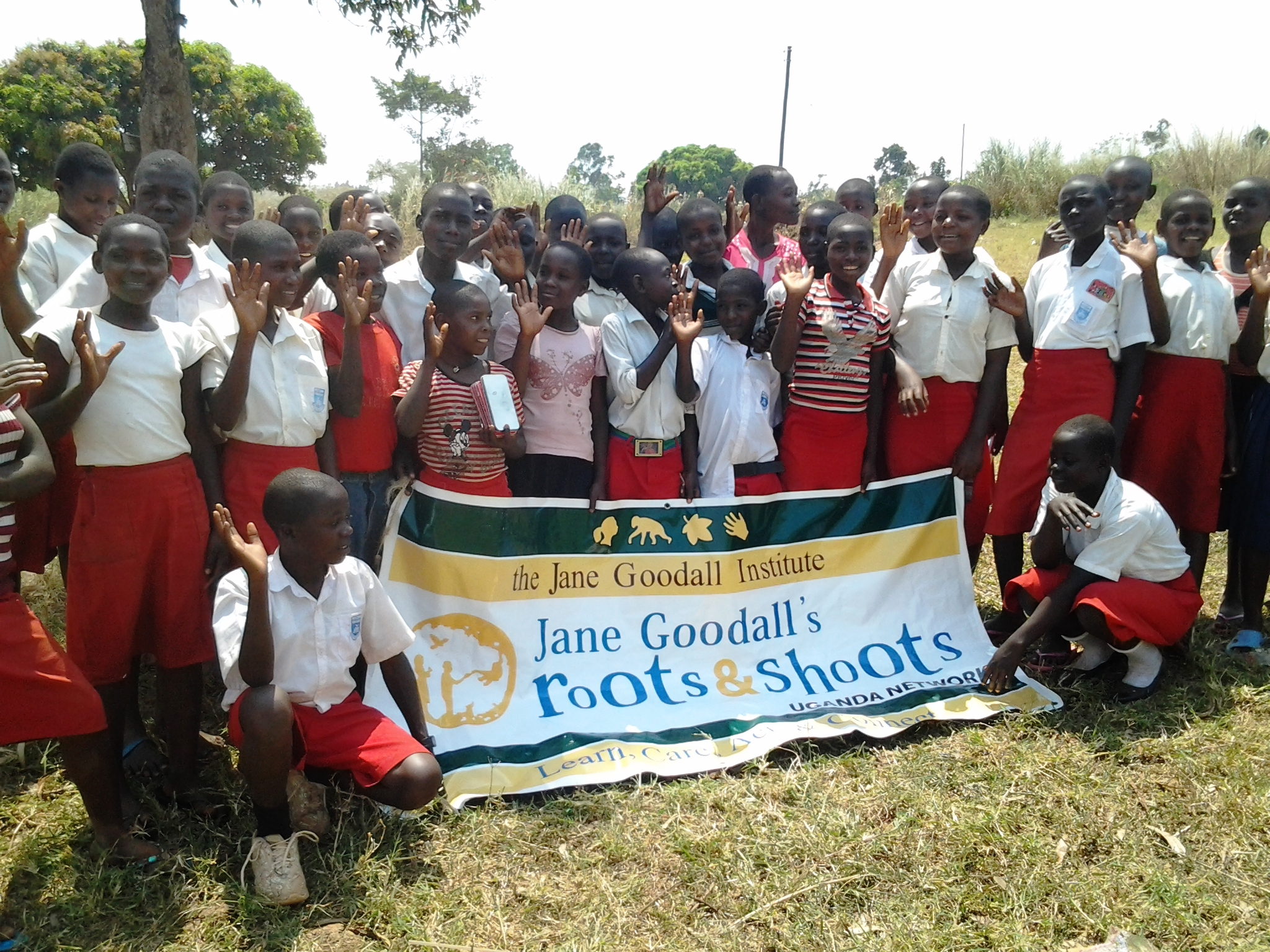
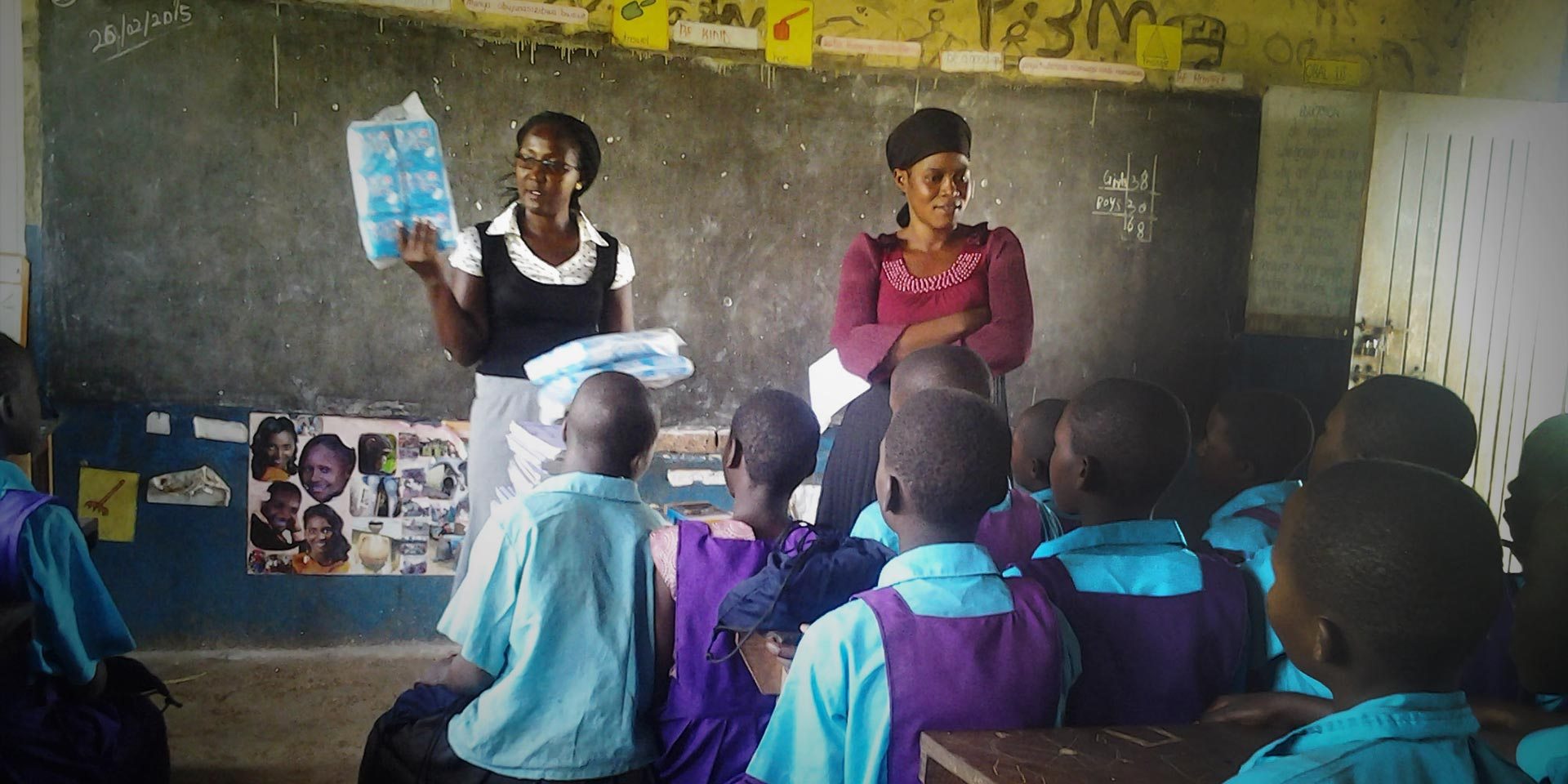
Girls Scholarship Project
The Girls’ Scholarship project helps to decrease the gap between the levels of education achieved by men and women in the Kigoma community of western Tanzania. Thus far, the program has sponsored 249 girls to attend elementary school, high school and university.
JGI launched the Girls’ Scholarship project in 1998. The sponsored girls are members of Jane Goodall’s Roots & Shoots program, JGI’s environmental and humanitarian program for youth, within their schools. As a result of the girls’ scholarship project, the girls’ parents and guardians actively participate in JGI’s conservation and development programs. In addition to increasing women’s education levels, the scholarship program trains recipients’ families in sustainable farming techniques, as well as forest regeneration and preservation.
Girls Peer Education Programme
JGI’s peer-to-peer education programme equips young women in Uganda with information on topics including HIV/AIDS, other sexually transmitted diseases and reproductive health. JGI also provides training in life-planning skills designed to help girls successfully navigate the challenges of maturing into adulthood. The girls then return to their schools and communities and share what they’ve learned with their peers who are often more comfortable receiving information from people of the same age group rather than adults.
The project also provides participating schools with materials to help teachers guide students and inform them about women’s health issues. These materials include pencils, pens and exercise books for girls whose families cannot afford scholastic materials, as well as hygiene supplies so girls won’t feel the need to stay at home during their period.
The peer-to-peer education program is based in schools that currently participate in Jane Goodall’s Roots & Shoots, JGI’s global environmental and humanitarian youth program. JGI’s peer-to-peer educators live in communities within proximity to priority wildlife conservation areas.
Promoting Sustainable Livelihoods
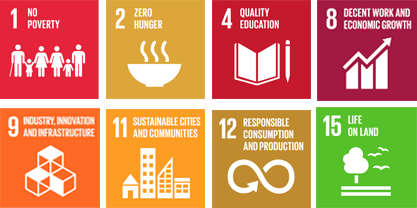
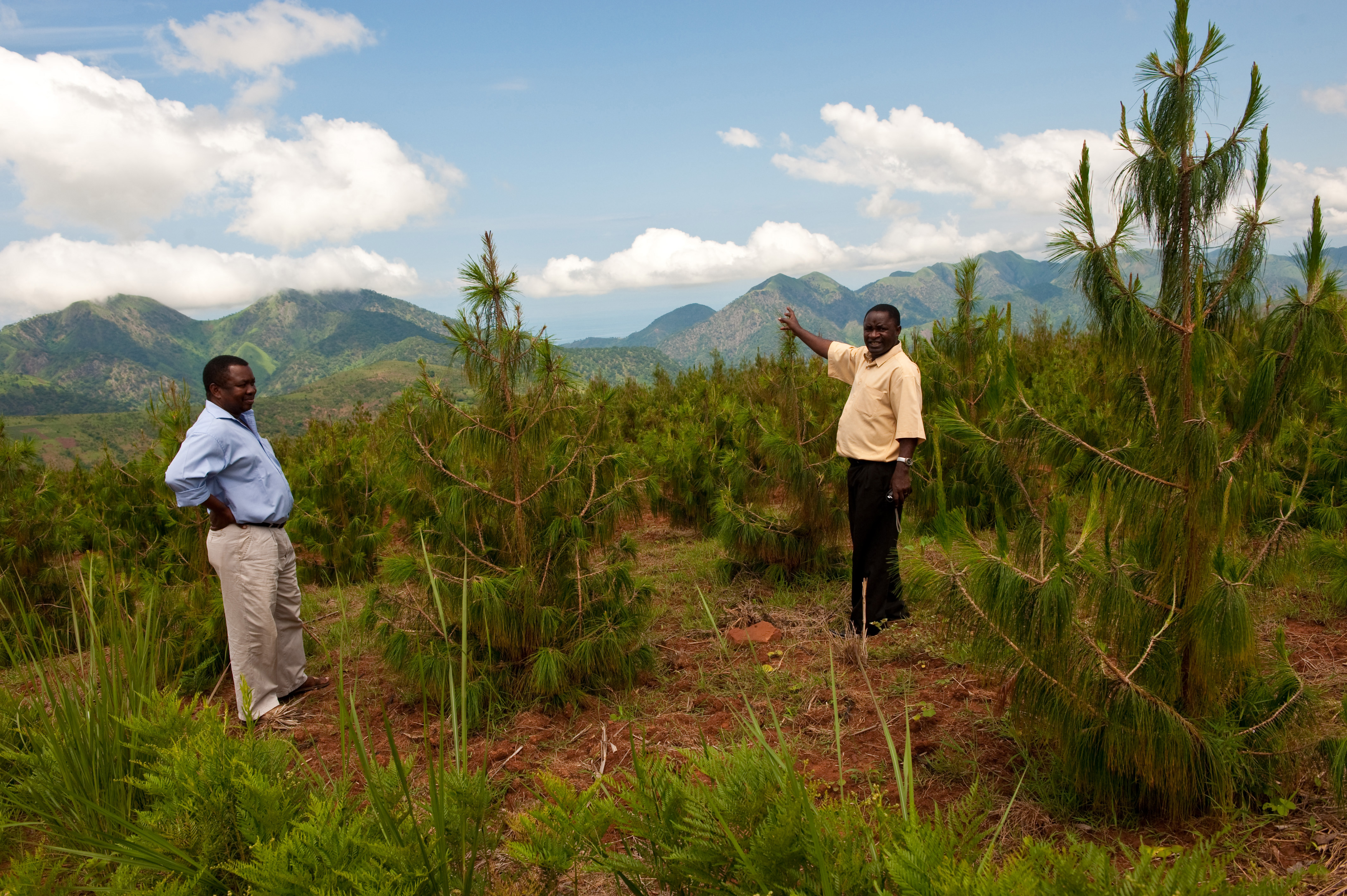
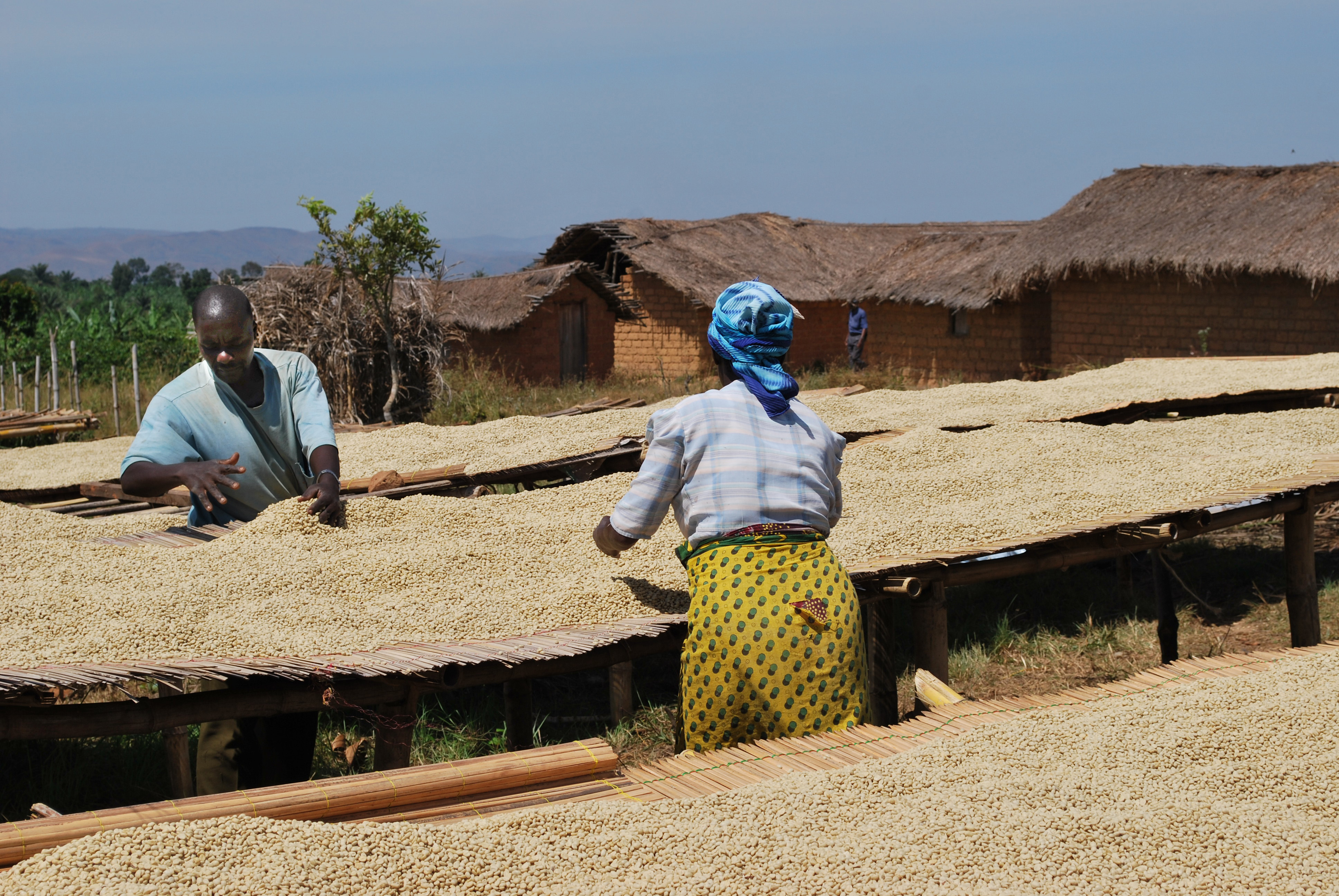
Through improved agricultural practices, community-managed microcredit programs, and sustainable production techniques that increase incomes while protecting forests and watersheds
Sustainable livelihoods that increase incomes while protecting the environment are critical to any lasting conservation effort. Community-managed microcredit programs, sustainable coffee production and growing crops under tree canopies are just some of the approaches that JGI introduces in our work with communities. We help families meet their basic need for food, school fees and other resources to enable them to enjoy a more sustainable future while reducing reliance on natural resources.
Environmentally friendly activities that improve incomes help to create a sustainable livelihood. Improving family resources improves school attendance, which reduces early pregnancy for girls and increases the socio-economic prospects of the family’s children. Better incomes means more access to health care, better nutrition and less human-wildlife conflict, an issue often driven by the need for basic resources like food and shelter. Consequently, sustainable livelihoods remain a core component of all of our conservation action plans.
When we think about conservation of chimpanzee habitat, we must take into consideration the people who live there as well. In order for communities to live in balance with their available natural resources, individuals must find methods of receiving income in sustainable manners. Improving livelihoods while protecting the environment ensures that communities can continue to thrive for decades to come, which is essential to our community-centered conservation approach.
The well-being of people and the environment already go hand in hand, and centering community economic enterprises around this understanding helps communities increase their desire and ability to use natural resources sustainably and responsibly. As a community’s knowledge of the relationship between their well-being and the well-being of the environment increases, the propensity of those who exploit the land and its wildlife for economic gain will subsequently decrease, thereby helping extinguish threats to apes and their habitats both indirectly and directly.
Protecting Great Apes
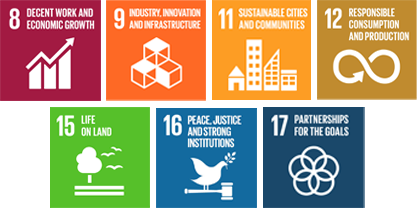
Through targeted interventions in critical habitats, support for law enforcement, public awareness campaigns and sanctuary care.
An estimated 150,000 chimpanzees remain in the wild, where once the forests sheltered over a million. JGI works to protect chimpanzees and other primates by supporting sanctuaries, law enforcement efforts to reduce illegal trafficking and public education to protect endangered species in the wild. Without sanctuaries, law enforcement officers would be unable to confiscate chimpanzees from great ape traffickers or hunters as there would be no place to take them. Without education programs, community members would not realize that they should alert law enforcement agencies about poachers or that their activities were wrong. JGI is now seeing an increase in arrests and prosecutions as a result of greater application of the law, but it is imperative for this work to continue.
A demand for bushmeat encourages poachers to kill chimpanzee mothers. This is coupled with a demand for chimpanzee infants in the illegal exotic pet and entertainment trade which encourages poachers to seize the orphaned infants. Often those who do not hunt for bushmeat still kill the mother to seize the infant. Since humans and apes transfer many diseases to one another; for every infant that survives its first year in its new home or business, approximately eight other infants die in transit. To combat the illegal trafficking of great apes, JGI promotes the triangular effect – working with other non-profit organisations, law enforcement and sanctuaries where confiscated apes are sent in order to crack down on humankind’s crime against their closest living relatives.
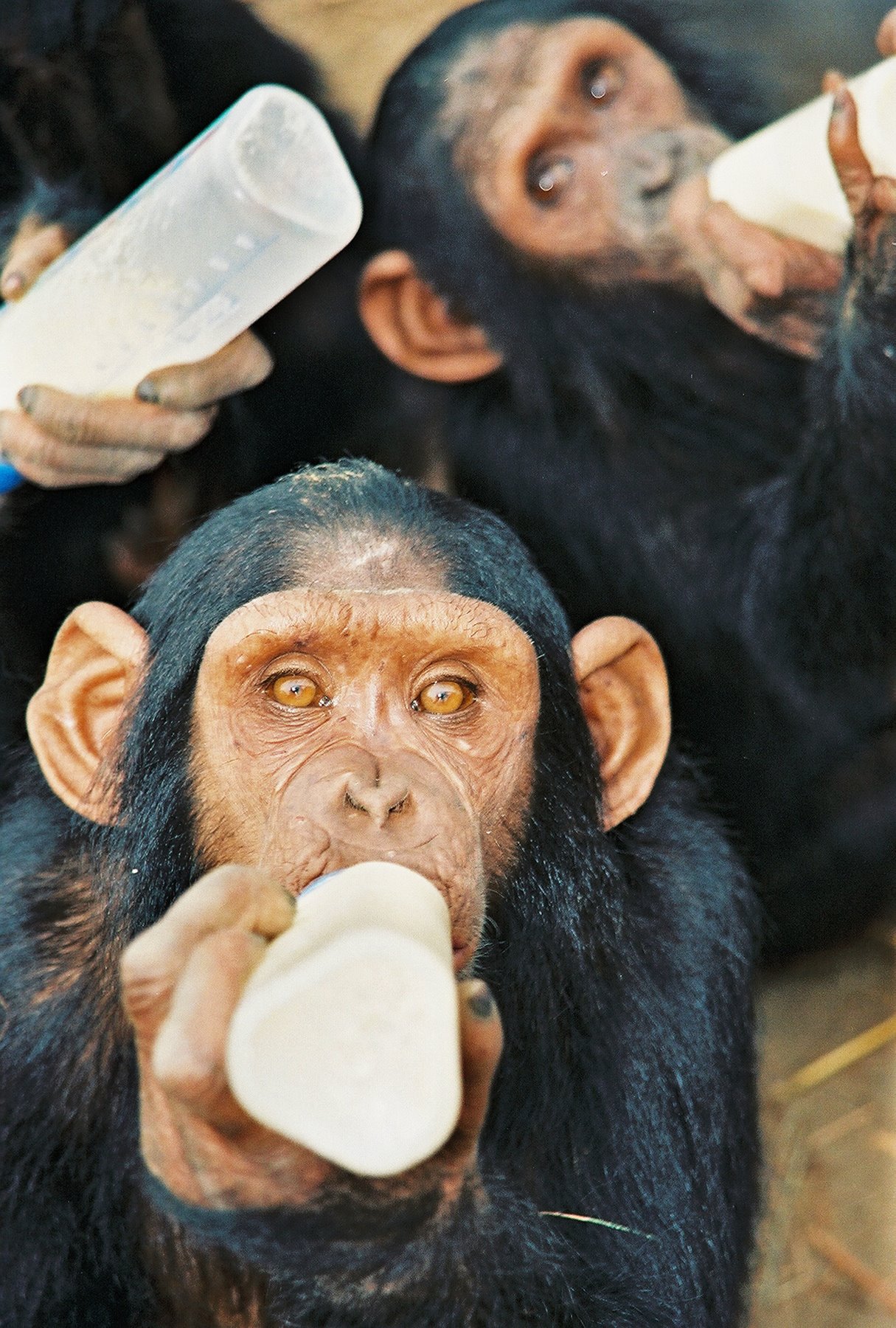
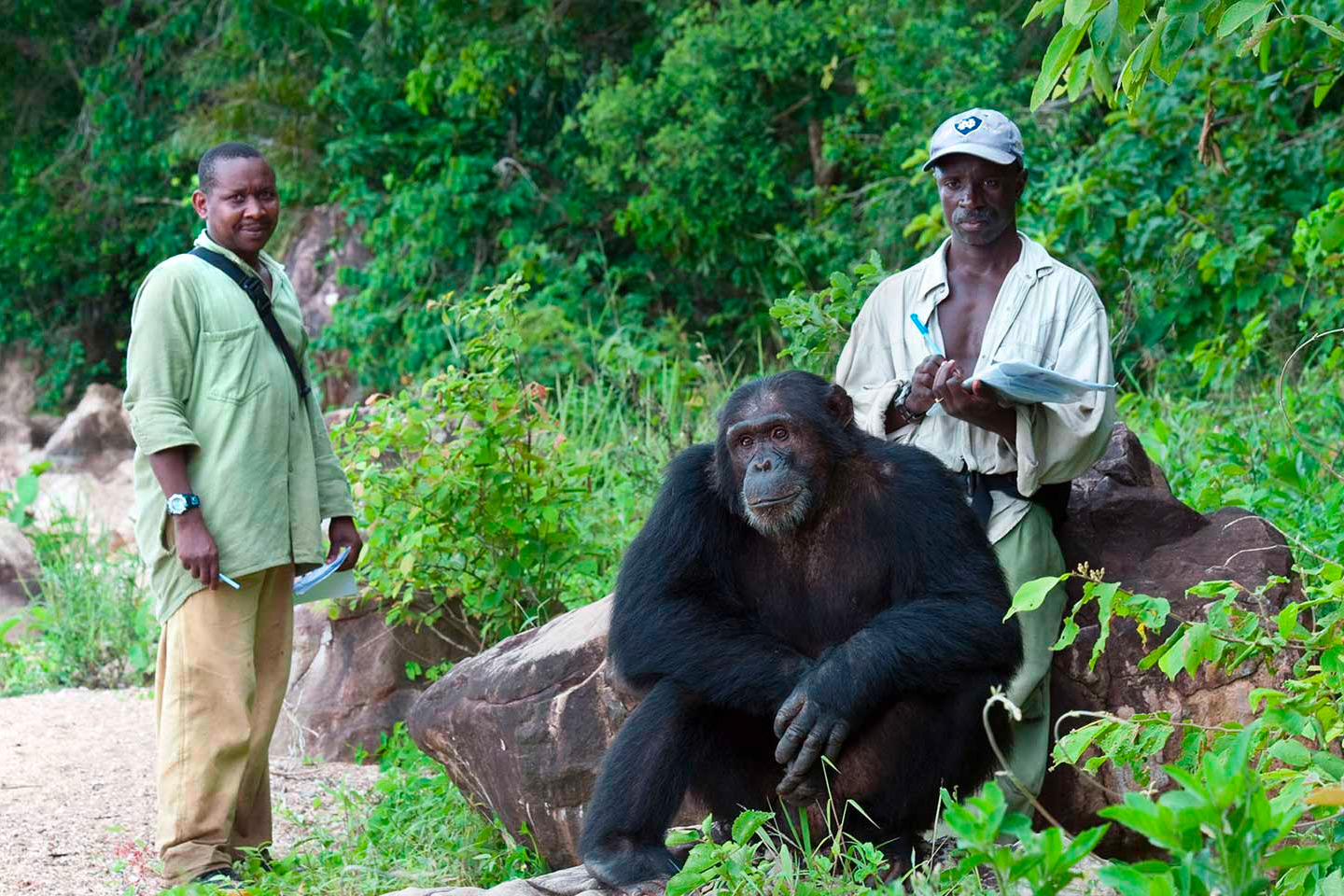
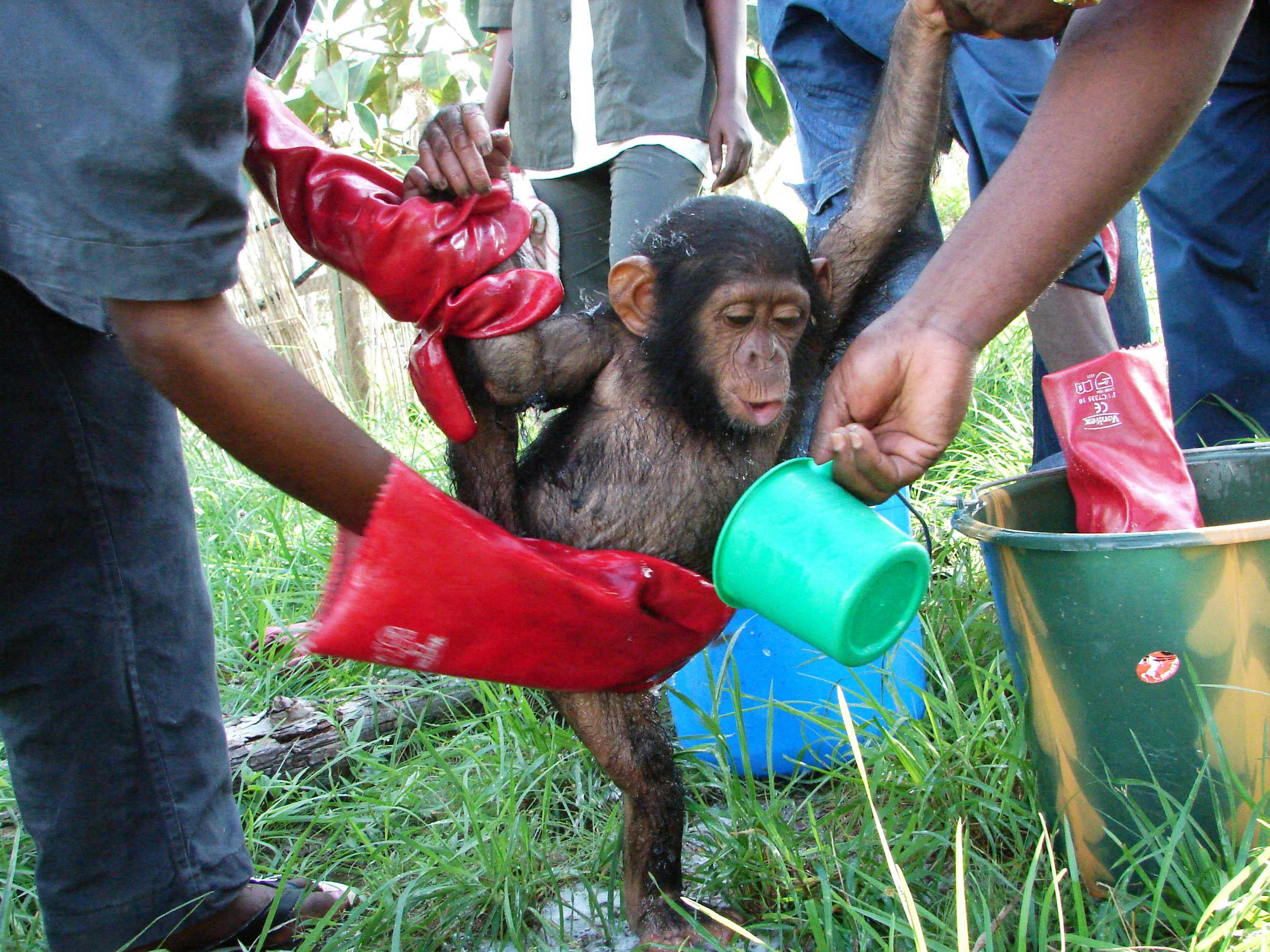
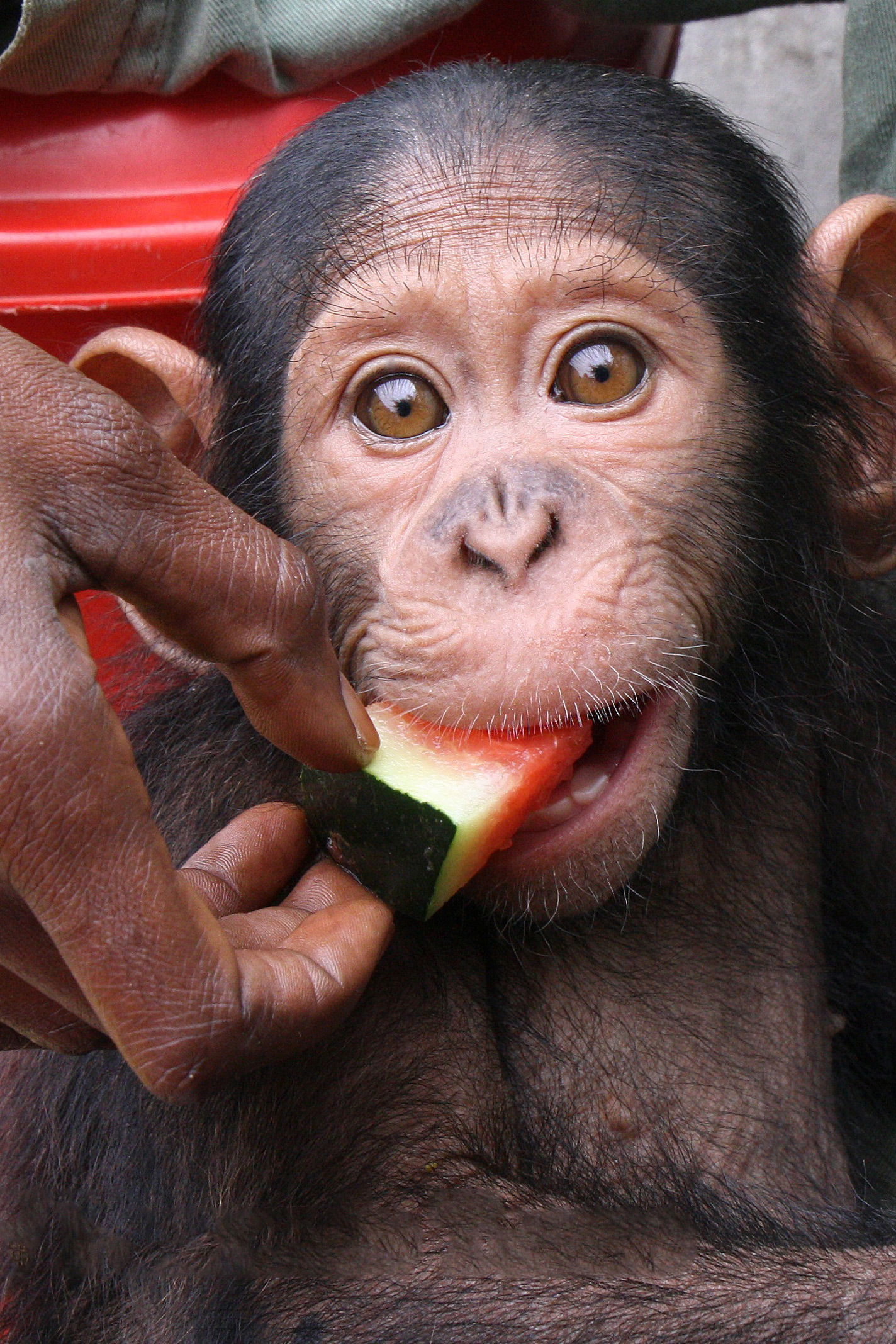
Gombe Stream Research Center
The Gombe Stream Research Center was founded in 1965 to advance Jane Goodall’s revolutionary findings about chimpanzee tool-making and other behaviors.
It also is a living laboratory, home to the world’s most studied group of wild chimpanzees. The Center’s mission is to operate a world-class research station in which the best available methods are used to continue and further develop the long-term primate research projects begun by Dr. Jane Goodall, and to advance basic science, support conservation, and train Tanzanian scientists.
Thanks to National Geographic and other television specials about Jane, Jane’s books about the Gombe chimps, and countless writings about her life and work, Gombe’s chimpanzees are known the world over. The most familiar to the public are the “F” family chimpanzees, a family line headed by the old matriarch Flo, who upon her death was the subject of an obituary in the London Times.
In more recent years, the world has come to know a pair who may be unique in the natural world – the chimpanzee twins, Golden and Glitter. Twin chimpanzees generally don’t survive in the wild, but Golden and Glitter had the advantage of a doting older sister, Gaia, who helped her mother Gremlin raise the two girls.
The twins and Gombe’s other chimpanzees are followed daily by JGI’s staff of Tanzanian researchers. The longitudinal study they continue furthers our understanding of chimpanzee diet, range use, intergroup aggression, health, and other areas of interest. These areas in turn inform chimpanzee conservation strategies.
The Center also hosts a regular stream of visiting researchers who conduct both basic and applied research, exploring areas such as, relationships between fathers and offspring or female social status and range use. One of the critical studies currently underway is led by Dr. Beatrice Hahn of the University of Pennsylvania. Dr. Hahn seeks to understand the natural history of HIV by looking at the factors causing transmission of the closely related simian immunodeficiency virus.
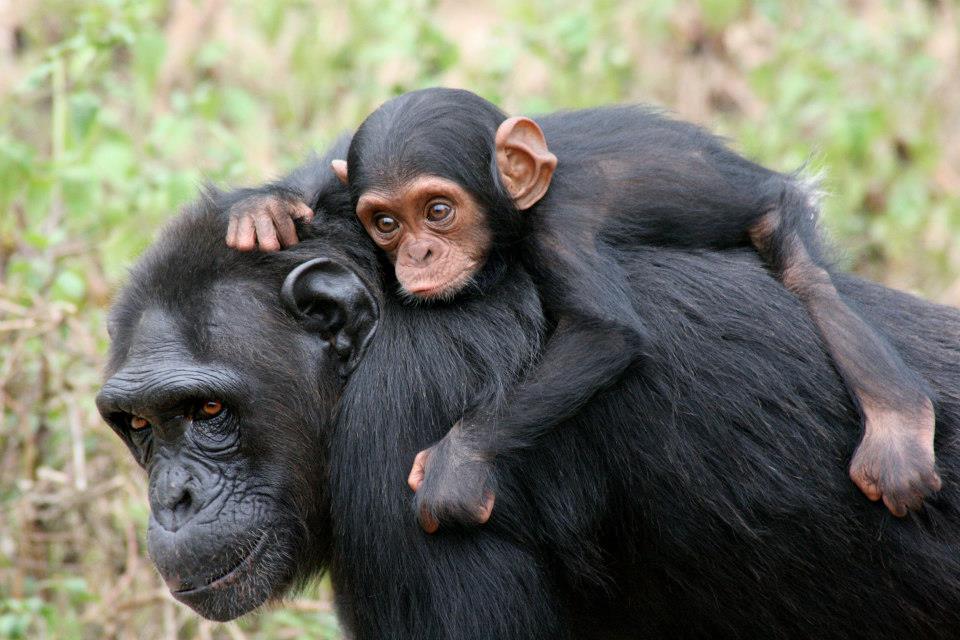
Tchimpounga Chimpanzee Rehabilitation Center
Every year, poachers in the Congo Basin kill thousands of chimpanzees as part of the illegal bushmeat trade. Typically, the hunters spare the lives of the smallest, confiscating them and selling them as pets, despite laws forbidding such trade.
The Jane Goodall Institute (JGI) works to end the illegal commercial bushmeat trade through education and awareness programs, community-centered conservation activities including development of alternate sources of protein and policy efforts. However, until demand for bushmeat subsides, illegal hunting will continue. To help the youngest victims—the orphaned babies—JGI operates the Tchimpounga Chimpanzee Rehabilitation Center (TCRC), a safe haven in Pointe Noire, Republic of Congo, where orphans who government officials have confiscated from the black market receive the needed care and attention.
The Tchimpounga Chimpanzee Rehabilitation Center, managed by the Jane Goodall Institute in partnership with the Government of the Republic of Congo, is not open the general public.
Public Awareness & Environmental Education
Dr. Jane Goodall knows two things about conservation: it cannot happen without involving a region’s human stakeholders, and the best way to promote it is through educating children on its importance at a young age. JGI works directly in four African countries to increase the public’s knowledge about the environment and conservation so that communities will take an interest in how sustainable practices improve their lives; projects such as public awareness billboard campaigns, school-based programming and community outreach all play a part in our work in the field. And Jane Goodall’s Roots & Shoots program works in over 130 countries around the world to support youth-led community action plans that help animals, people or the environment and spread the message that every individual’s efforts matter. Environmental education empowers people to care about their world and to take action ensuring its survival and well-being. This is the legacy and vision of Dr. Jane Goodall to empower young people to create practical solutions to big challenges.
Ensuring Healthy Habitats
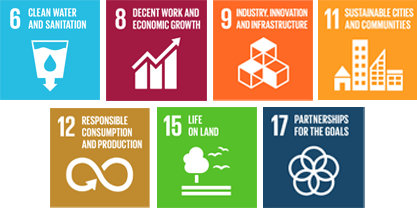
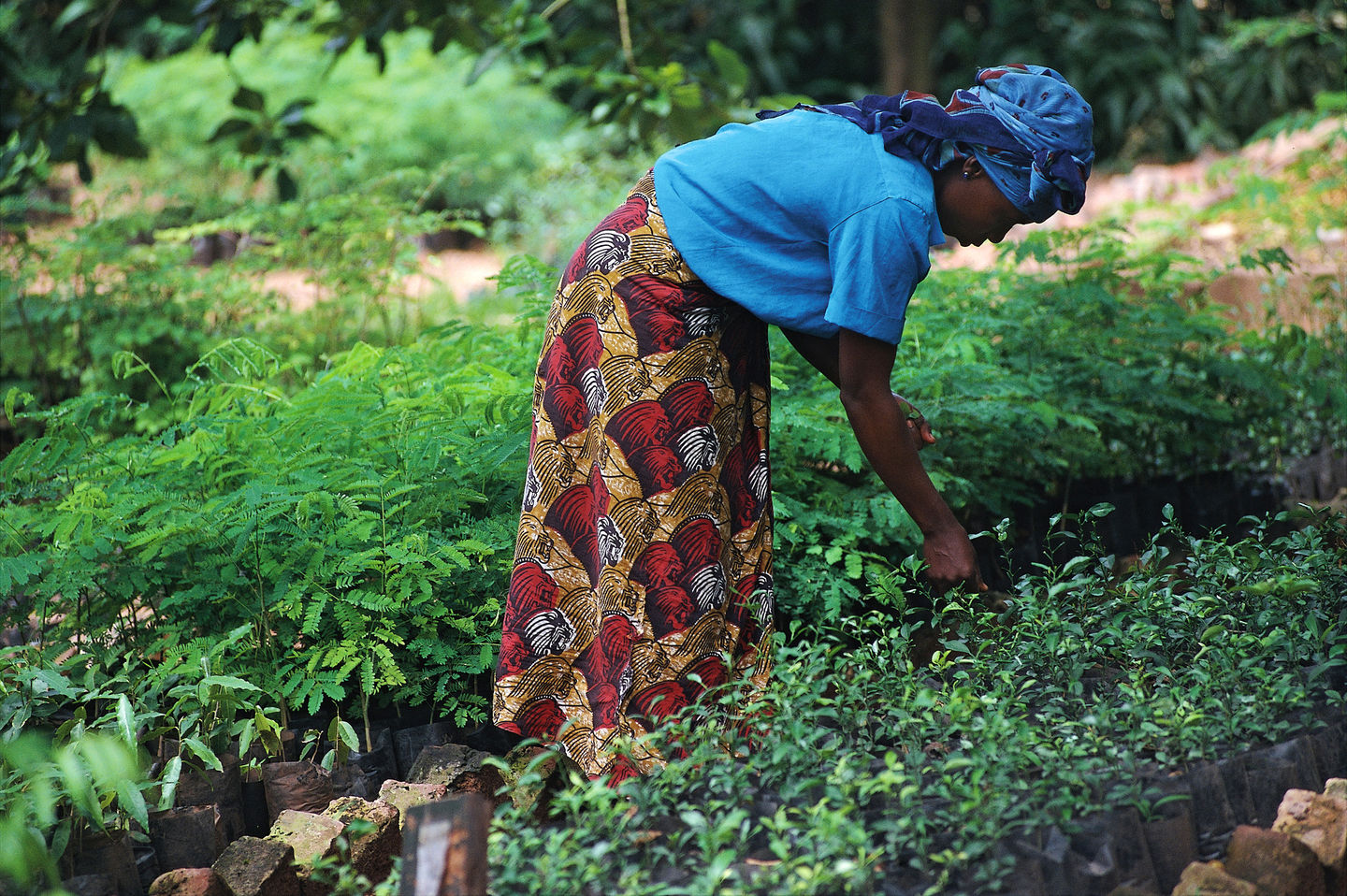
Through the use of cutting-edge science and technology to inform conservation planning and to connect communities with the knowledge and resources they need to protect their forests.
Fragmentation and degradation of habitat along with illegal hunting are two of the most significant threats to chimpanzees in the wild. Reducing forest loss is essential to preserving the habitat that chimpanzees and many other species need to survive. JGI works to create balance between the ecosystem’s ability to support human needs whilst sustaining the other animals who share the landscape. We reforest landscapes while addressing community needs. This balance of effort is essential to stabilizing the chimpanzee population.
JGI works at the landscape scale, in order to support significant populations of chimpanzees. We focus on protecting vital corridors by weaving together a network of community reserves and national protected areas that connect communities of chimpanzees, improving genetic viability of the species across its entire range.
We emphasize local participation in conservation planning and monitoring. We leverage mobile mapping technologies to empower communities by providing them with accurate information for conservation planning and management. We include local culture and community needs in our conservation approach. This approach protects water sources and local agriculture. It also ensures that these resources will be available to the community for generations to come.
As human populations rise and forests fall, great ape populations become fragmented and isolated from one another, decreasing genetic diversity and the odds of long-term survival of each community. Also as human communities grow unsustainably, they put the future of natural habitats and resources at risk of overuse, degradation and loss. The best way to protect healthy habitats for wildlife and to ensure sustainable human communities that will protect that habitat is to work with the people in promoting community-centered conservation. JGI works with communities across chimpanzees’ range by engaging them through community action and monitoring use withcutting-edge technology, in order to instill in people a sense of pride in conservation practices and ownership and stewardship for their environment.
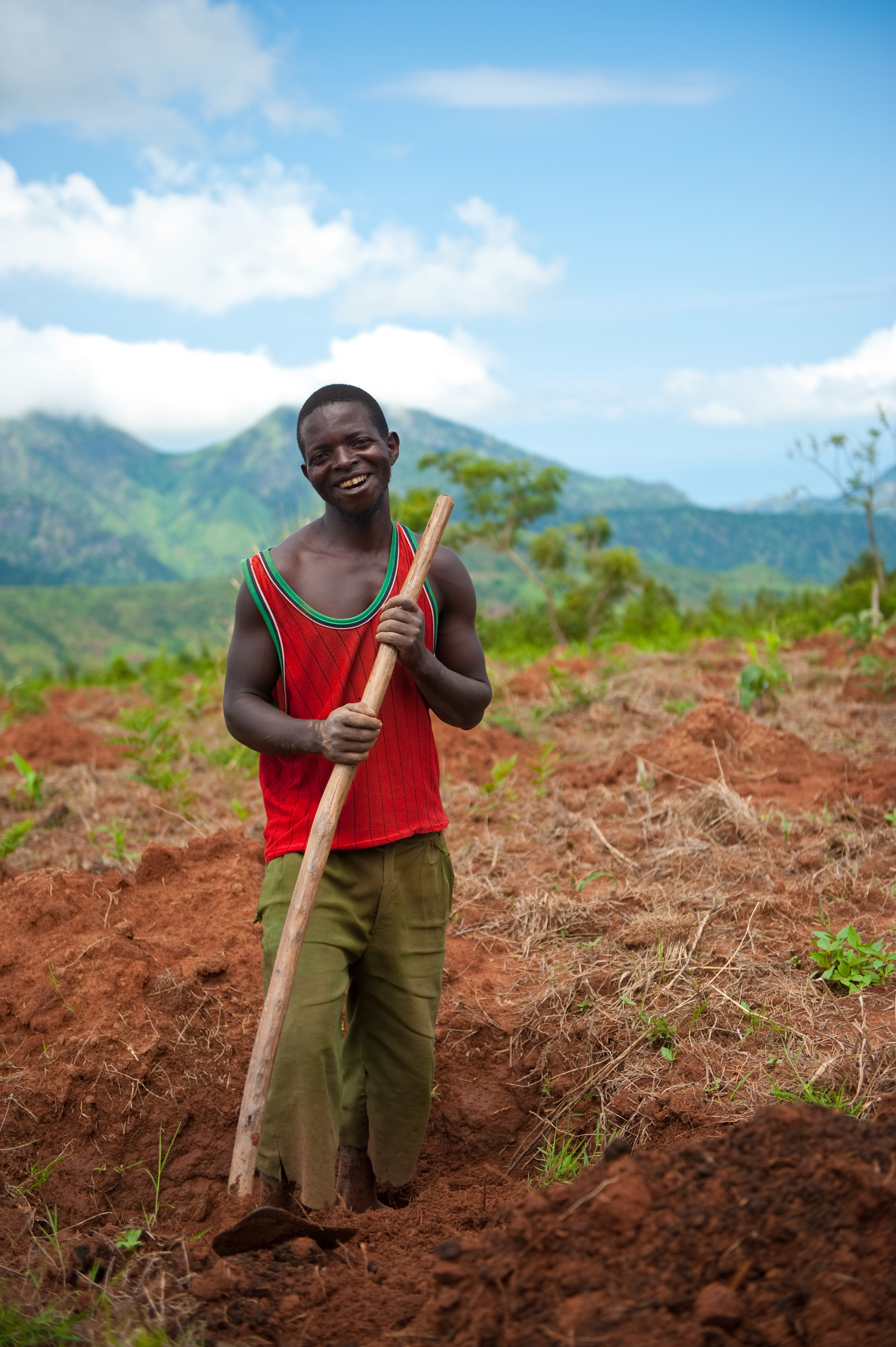
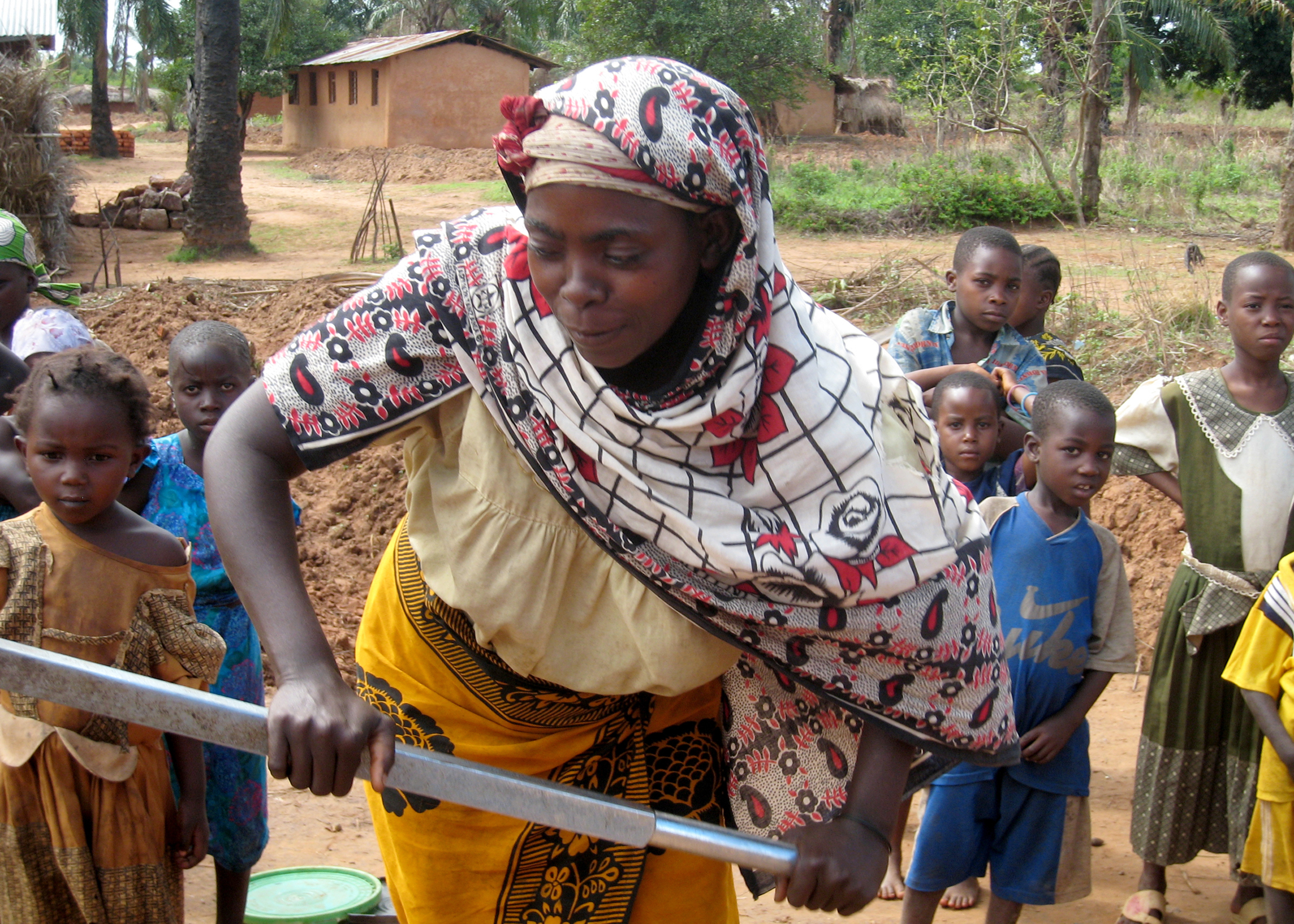
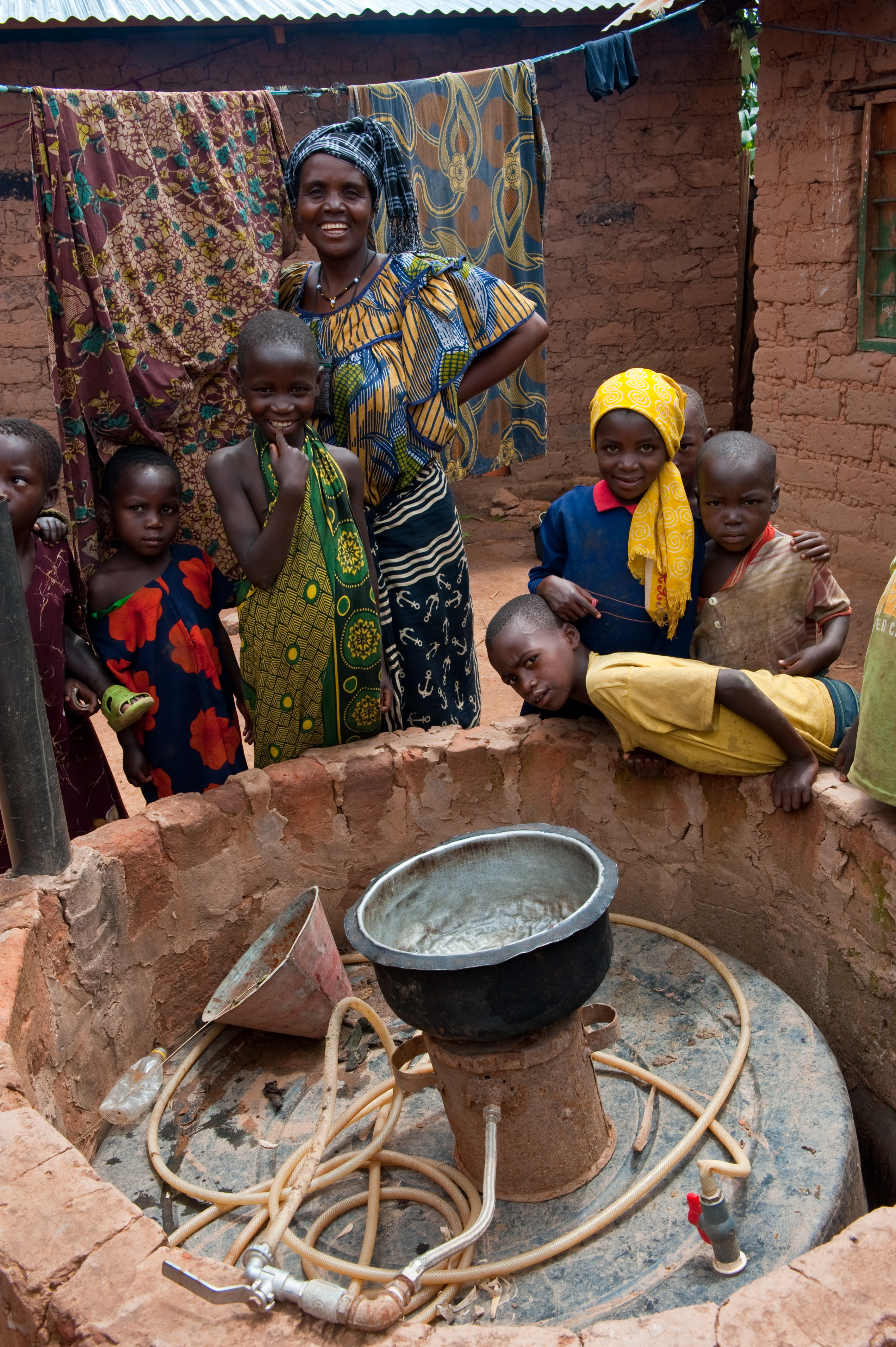
Gombe Masito Ugalla Ecosystem
The Gombe Masito Ugalla Ecosystem (GMU) Program’s goal is to conserve the diverse habitat of western Tanzania, which contains between 25 percent to 40 percent of the chimpanzee population within Tanzania. The Jane Goodall Institute is working with 52 villages to create ways for their 311,000 villagers to live cohesively with surrounding forests and wildlife.
In 1994, JGI developed its community-centered conservation approach, which integrates the local communities in JGI’s conservation efforts. By combining sustainable livelihoods, local capacity building and education, JGI is able to make long-lasting impacts on habitat conservation. Unchecked development, unsustainable farming and poor enforcement of environmental policy by government all contribute to habitat loss in western Tanzania. However, JGI and local communities are working to combat habitat loss and degradation by promoting environmentally friendly agricultural practices, spreading awareness, increasing education and raising local incomes through investing in the surrounding environment.
DRC Conservation Action Plan
JGI is coordinating the Conservation Action Plan (CAP) to protect the Democratic Republic of Congo’s most important regions for biodiversity. Representatives from the national, regional and local government were brought together to further the reach of the CAP program. This project targets 66 million acres, roughly the size of Colorado, where 35,000 chimpanzees and 2,500 to 3,000 gorillas live.
The CAP created a mapping database, allowing scientific information to be crowd-sourced and shared across communities.This mapping provides conservationists with the most complete view of the status of great apes in the eastern DRC region, and it prioritizes the most important threats to the gorillas and their habitat. Additionally, the visual maps allows local communities to have a better grasp of their impact on the environment.
Using Science & Technology for Conservation
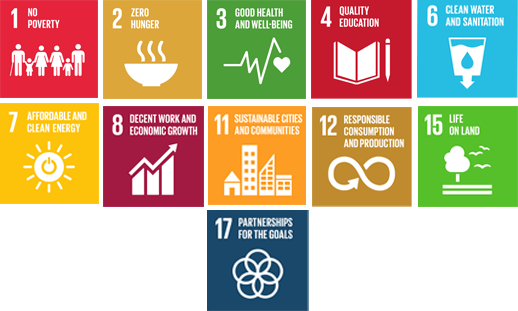
Leveraging cutting-edge technology to achieve lasting, on-the-ground conservation results in critical habitats.
From our founding, science has been at the core of JGI’s work. Today, in addition to continuing the longest-running field research on chimpanzees, Gombe serves as a living laboratory, helping us understand how to see and manage people, wildlife and natural resources under the same conservation action plan. Continuing the legacy of Gombe research is essential to the entire conservation sector’s understanding of chimpanzees, their conservation needs, and the efficacy of strategies to save chimpanzees not only in Gombe but also over their entire range in Africa.
Building on Dr. Goodall’s groundbreaking research, JGI’s conservation science program provides the platform to generate actionable information to improve conservation decision making, inform the management of chimpanzee populations and design human land uses that promote the protection of chimpanzees and their habitats. Effective decision-making requires accurate and up-to-date information about chimpanzee population, status and distribution as well as data points about the proximity of threats to the corridors linking forests. Recent developments in remote sensing and cloud computing are making it possible for us to use satellite imagery to provide a detailed overview of chimpanzee habitats that provide the kind of resolution needed to inform specific, local conservation decisions. With support from the National Aeronautics and Space Administration (NASA), JGI is developing a Decision Support System to annually monitor and forecast chimpanzee habitat suitability and health in Africa.
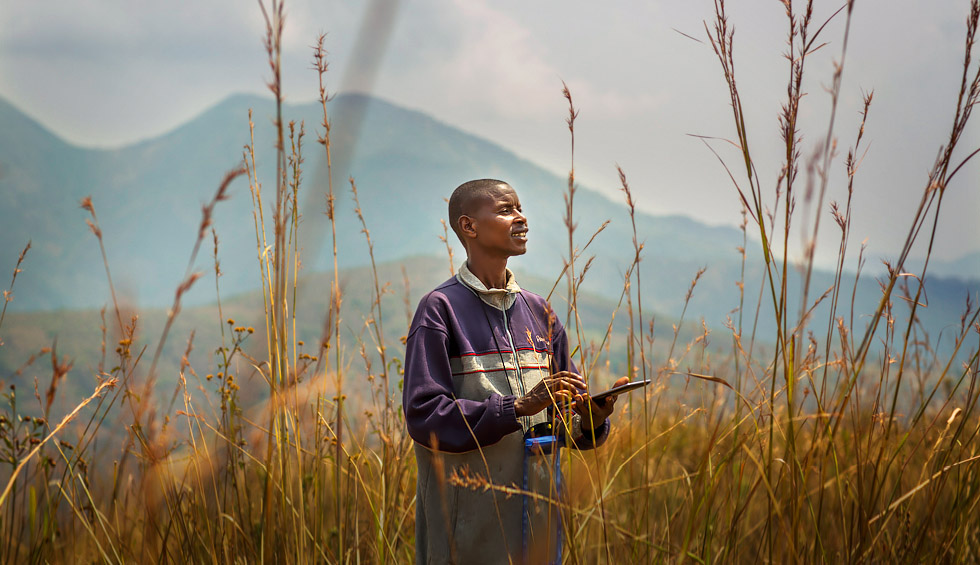

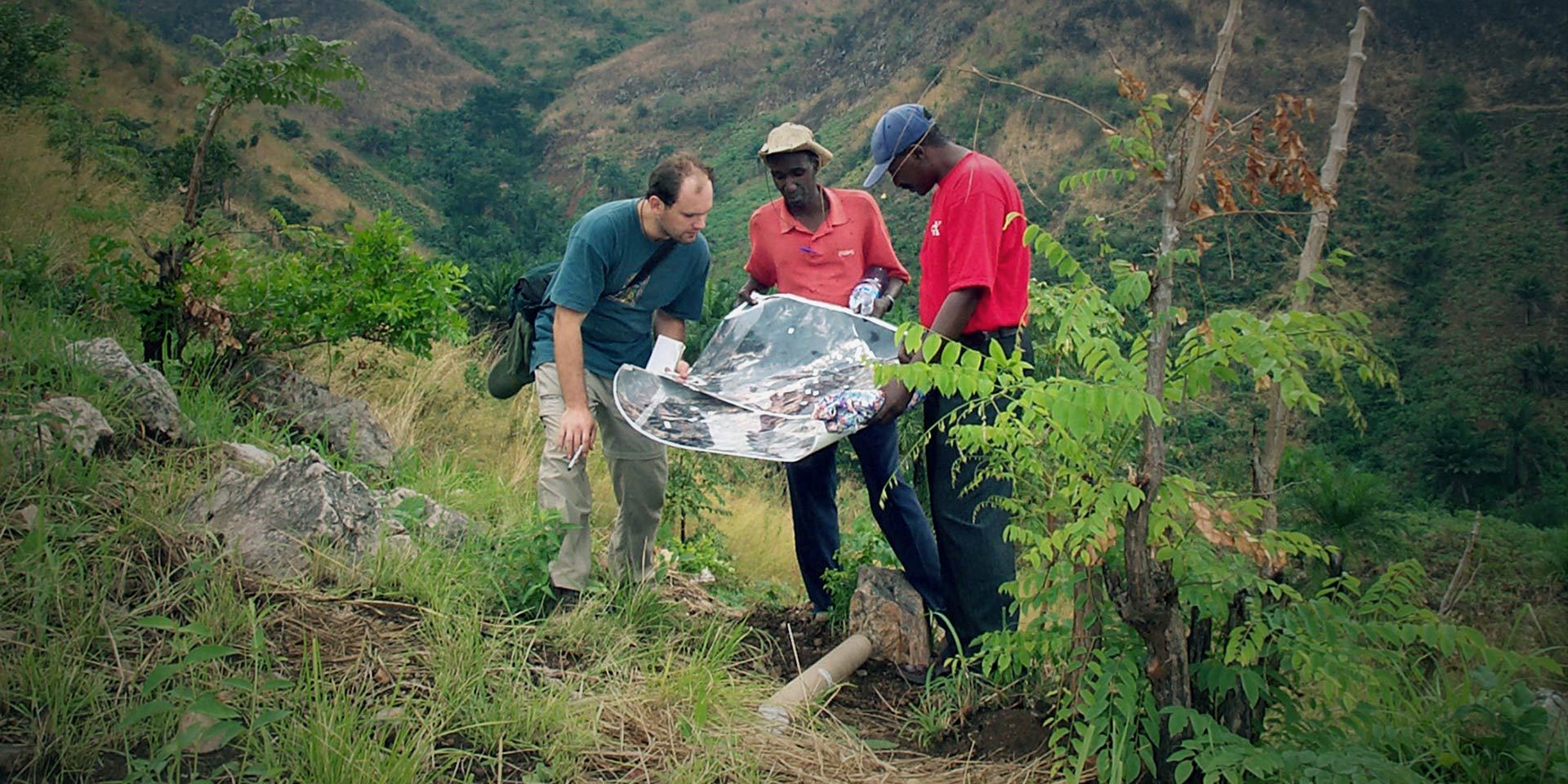
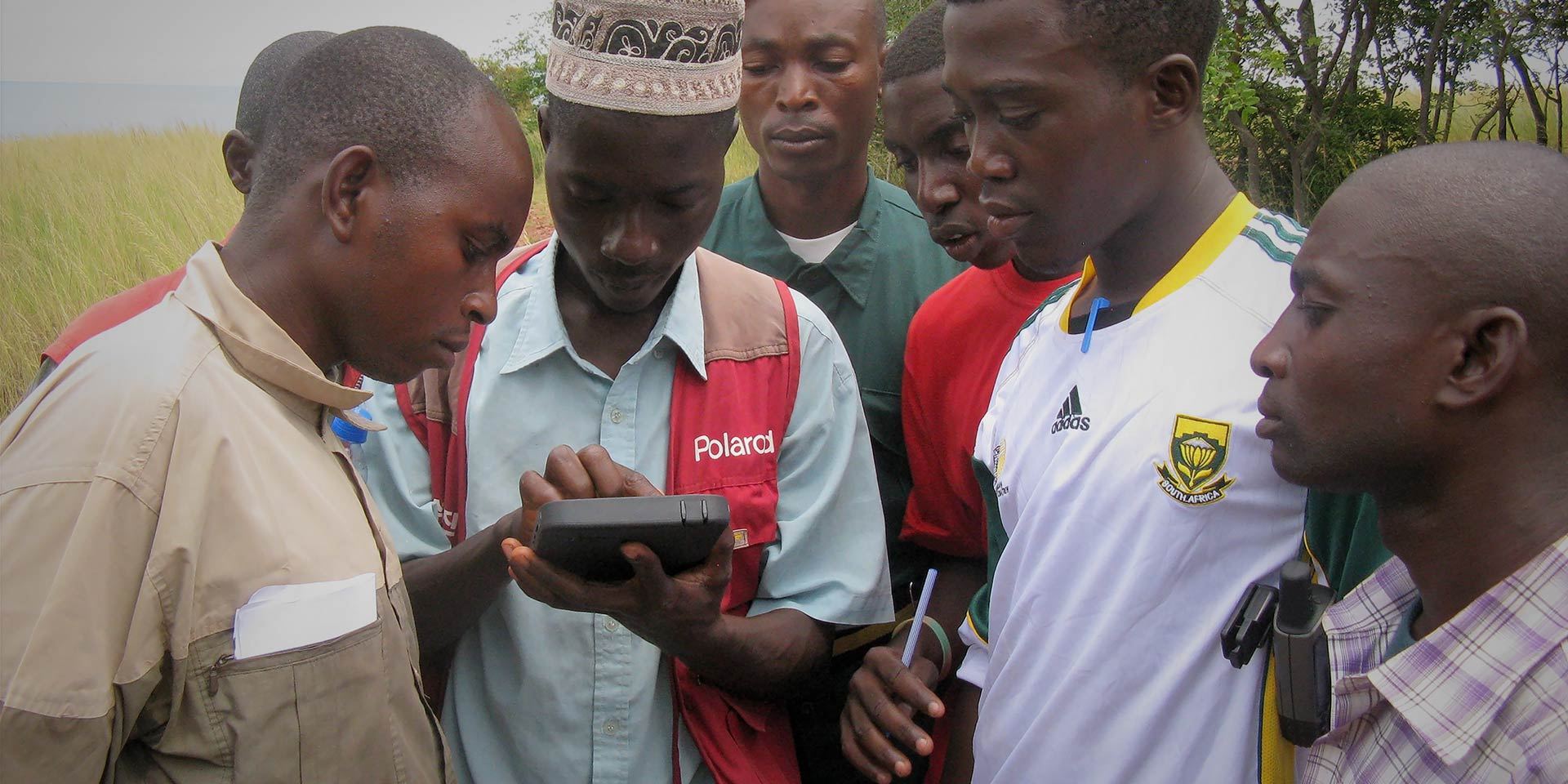
Cloud-based mapping platforms
Our efforts to amplify and promote the depth of information available about landscapes are improving the understanding of conservation and land use decision-makers at the community, national and range-wide level. Small-scale forest owners, international conservation organizations and governments are now sharing information that was previously available only to resource-rich users. We leverage mobile mapping technologies to empower communities by providing them with accurate information for conservation planning and management.
With the support of consistent core funding, we can ensure that JGI will remain at the forefront of democratizing access to critical information for those who are most impacted by conservation decisions.
By using evolving technology in innovative ways, we can not only access new information on animals, the environment and people more accurately than ever, but we can democratize and share that information through open platforms to others for broader and more comprehensive conservation efforts. JGI knows the value of knowledge in individual and collaborative conservation efforts, and by sharing our knowledge on health habitat, ape presence and illegal activities, we aid the conservation community in zeroing in on threats and maximizing conservation impacts. Improved science and technology allow us to understand the scope of threats and successes at a massive scale through large-scale satellite imagery and small-scale but widespread community forest monitoring. Enhanced technology also allows us to improve the well-being and livelihoods of communities by using alternative energy, forming village land use plans and increasing access to clean water, disease prevention and reproductive healthcare.
Decision Support System
This Decision Support System integrates 30-meter resolution satellite imagery with a chimpanzee habitat suitability model and a model that predicts future land use change. These data sets are enhanced by field chimpanzee surveys and crowd-sourced field data collected by local communities and forest monitors using mobile smart phones and tablets. This is the first time a dynamic monitoring system will consistently record threats and changes in habitat over time. JGI plans to maintain and run the Decision Support System to benefit the larger conservation community, effectively extending our conservation impact without replicating the efforts of others or growing our footprint of costs. Additionally, JGI will publish an annual chimpanzee habitat health map that will be shared openly across the world to inspire, support and inform conservation actions as well as to measure our collective success in saving chimpanzees.
JGI will continue to be at the forefront of rapidly evolving technologies, developing cutting-edge uses for technologies including, but not limited to:
- Smart phones and tablets to collect and retrieve data
- Mobile applications to monitor chimpanzee presence and threats;
- Development of push applications to support law enforcement
- Use of satellite imagery and unmanned aerial vehicles to monitor habitat change and human land uses impacting chimpanzees.
JGI in Partnership with NASA
NASA and the Jane Goodall Institute have collaborated in an effort to conserve the chimpanzees and the habitats.
Dr Lilian Pintea, the vice president of conservation science for the Jane Goodall Institute, said: "When we first got our landsat satellite images from '72 and '99, we made a natural colour composite of Gombe and the area outside Gombe and put them side-by-side and realized that lots of deforestation happened. You can see it, the villages lost maybe 90 per cent to 80 per cent of the forest cover.
"It's very shocking to everybody, realizing what has been lost. When deforestation happens, important ecological functions and services are lost - impacting both chimps and people."
"NASA satellite data helps us understand what it means to be a chimp by overlaying distribution of the habitat with the chimpanzee behavior and ranging data," Pintea said. The combination allows him and other scientists to see where chimps are most at risk and design conservation strategies.
Villagers were motivated to find new ways to sustainably manage their land and to protect the health of the areas. The Jane Goodall institute and communities started a forest monitoring programme to provide training and equip community members with GPS-enabled devices to document forest activities.
Together with the institute, villages developed land use plans for mapping where to build homes, what areas could support agriculture, and where it was best to harvest the forest sustainably.
Dr Goodall said: 'It was really really exciting to see the impacts of these images on the villagers. And to see them sitting around and identifying sacred places, and that enabled them to do these land use management plans, and that's made all the difference."
According to NASA, tree cover is returning, and Earth observations are now being used to show progress and inspire continued action. This helps protect soil needed for agriculture and clean drinking water, and safeguards forest health. It also ensures the long-term survival of Gombe's famous chimpanzees and those across western Tanzania.
Dr Goodall said: "I think that there's no question but that NASA with its satellite imagery used in the right way, it can be really helpful for conservation."
Dr Pintea said that NASA and the USGS's open data policy and research funding support has allowed him and other scientists to build a satellite-based decision support system for monitoring habitat health not only in Gombe but for the entire chimpanzee range in Africa, he said. "We are benefiting from these long-term investments now."
The Difference You Can Make
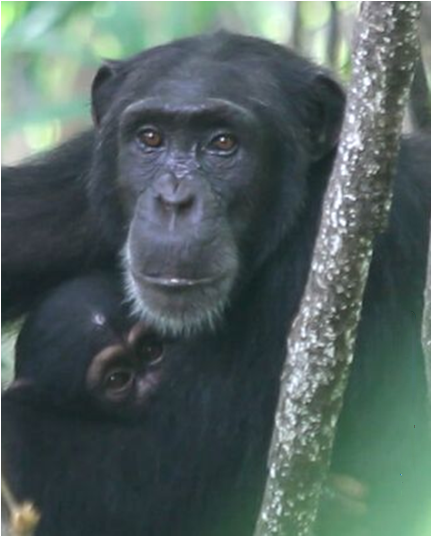
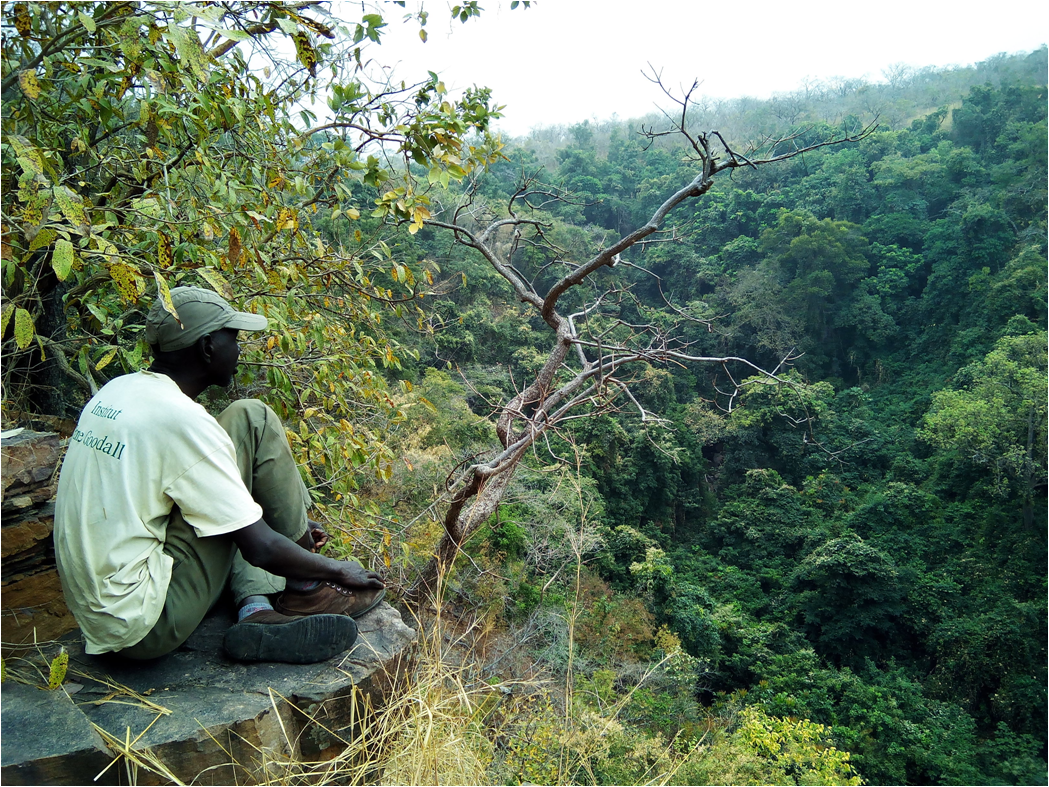
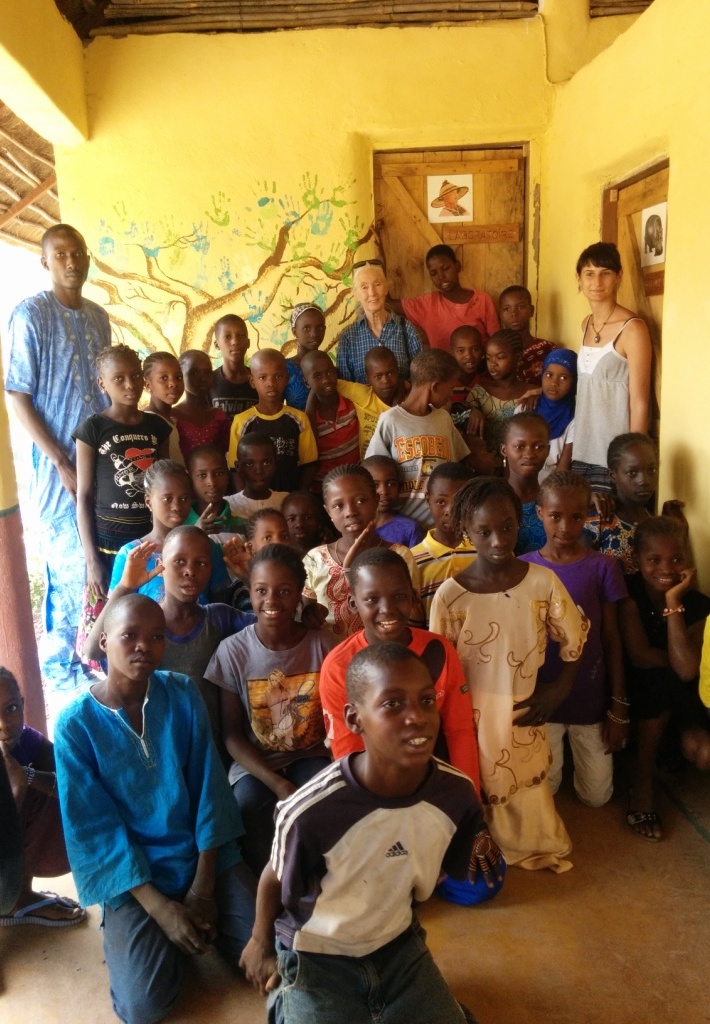
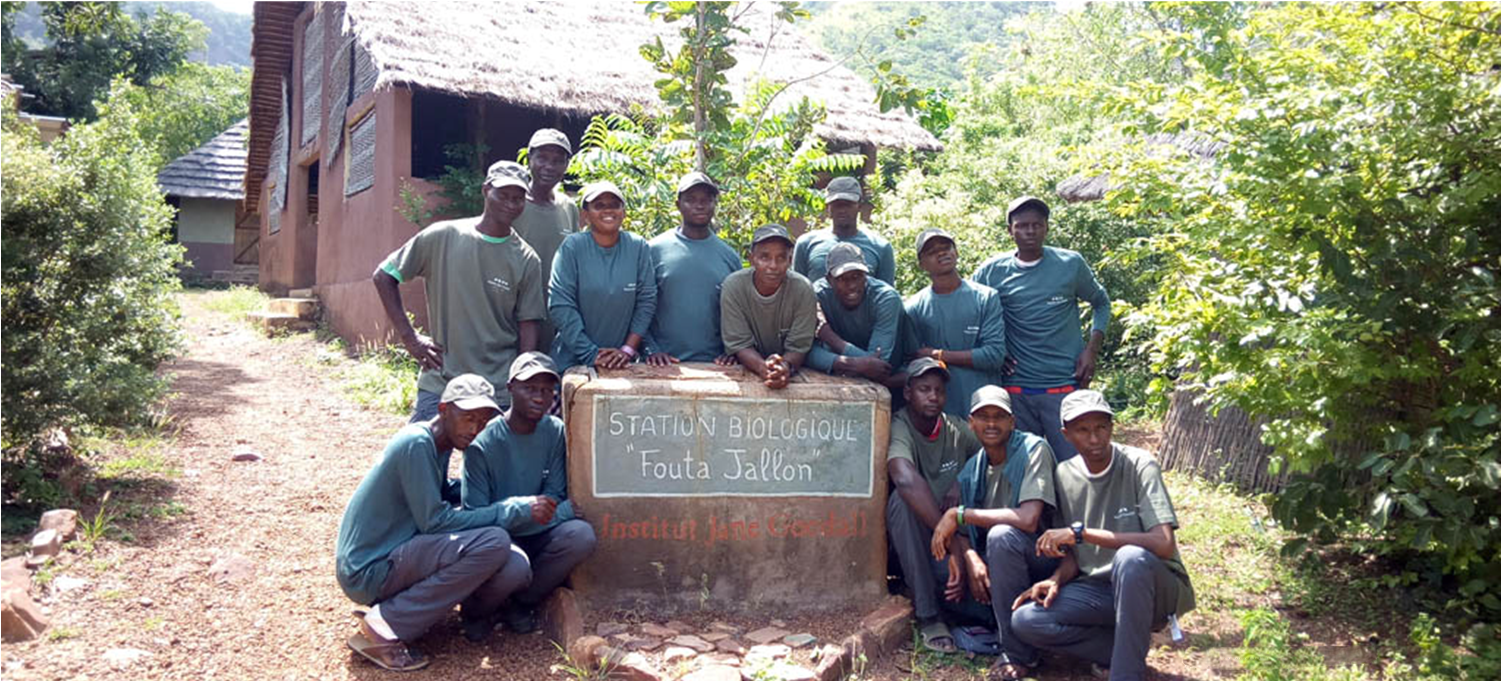
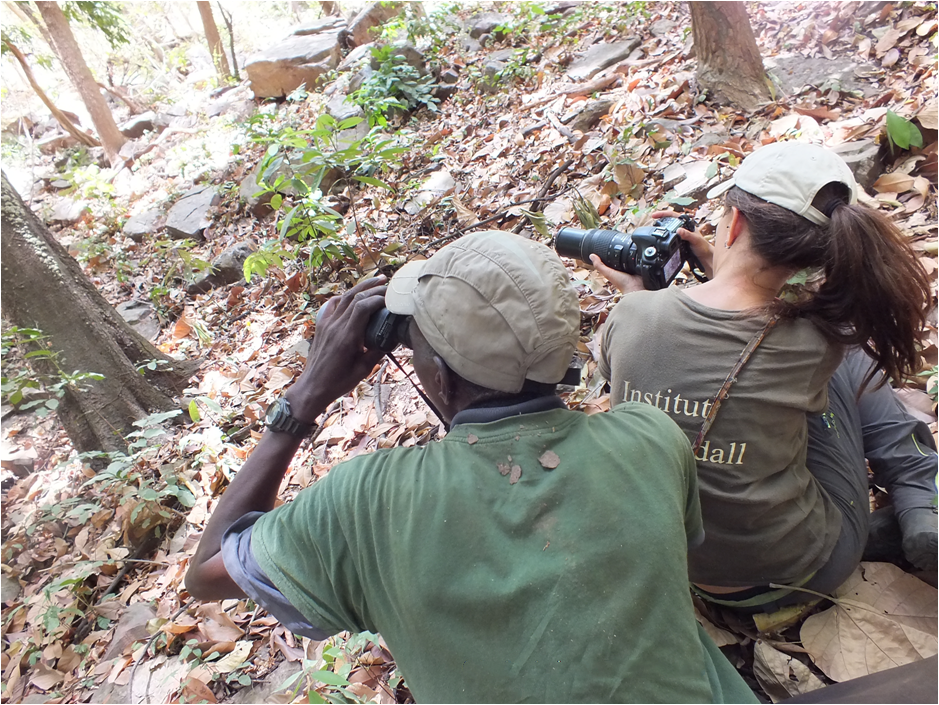
Directly support the work being undertaken in Africa by JGI - See the direct effect your support can impact.
